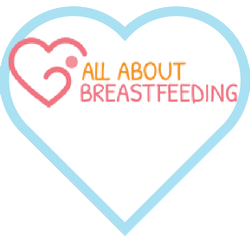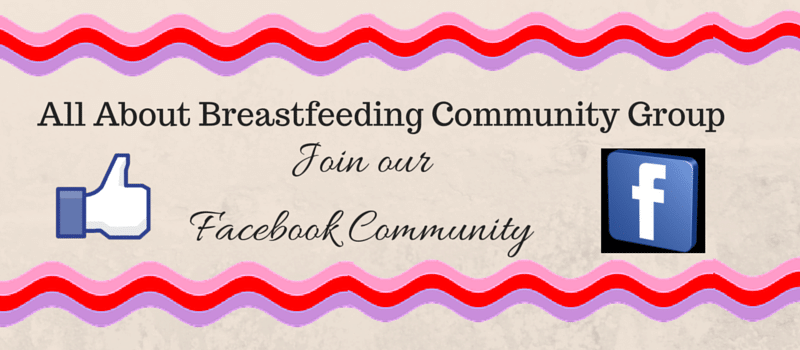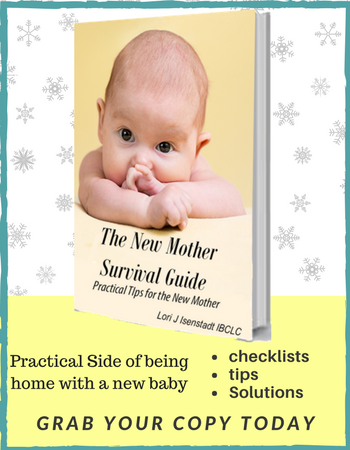Episode 377
I am recording this show after a busy week of helping moms with breastfeeding challenges. While I address varied topics related to breastfeeding, some weeks one challenge seems to be a hot topic more so than others. This week, it seemed to be more milk supply issues then moms who are breastfeeding in pain issues. It seemed that quite a few moms are suffering from what I like to call milk supply anxiety.
Some have absolutely no reason to worry about their milk supply at all. And yet they do because of these situations:
1.There mother told them they did not make enough milk. One mom I visited with this week, she told me that both her mother and grandmother did not make enough milk for any of their babies. Her name was Sharon and yes, That was a pretty broad statement and, of course, I cannot help but be curious for more information and learning about what happened in these 2 ladies early breastfeeding life to have them not make enough milk for their babies.
2. Now, I am with this mom to help her with breastfeeding challenges, not discuss their mother and grandmothers breastfeeding experience. I don’t want to take time away from helping her, however, I can just tell that with some new mothers, unless they can get some clarity about this, she is going to have a difficult time believing she will make enough milk for her baby.
3. So, I probed just a bit, just enough so that I could give her some feedback on her family members experience, which I hope would allow her to see her experience as something new and different and having nothing to do with her ability to make milk.
4. She definitely gave me enough information that I felt confident in telling her that their experiences does not factor into what hers is going to be like.
5. Both her mother and grandmother were told they did not have enough milk by their providers in the hospital. Her grandmother was given a bottle of formula after the first few hours of her baby crying at breast. Her GM told her that she kept trying to breastfeed, but her baby fought her at the breast. Very quickly, there were more bottles, very little breastfeeding and no pumping. She explained how breastfeeding was going at her next pediatric visit and was told that her baby was fighting the breast because she must not have milk. 1 week later she said she stopped breastfeeding – because she had no milk. Her mother had a fairly similar story, except her mother did not really want to breastfeed. At the time, her babies pediatrician educated her on the benefits of breastfeeding said if she could, it would be the best food for her baby. I was really happy to hear that! But her mom tried a few times and said she didn’t really like it. Because she did have staff in the hospital encouraging and supporting her, she came home breastfeeding. When her first baby was about 5 days old, she let her mother give bottles of formula at night. She was exhausted and wanted to sleep. By the time she went back to the pediatrician, she felt like she had no milk left and that is exactly what she told the Dr. and he agreed. She told her daughter that one part of her did feel like a failure when she told the dr she was no longer breastfeeding, but she also said that she was happier because others could help with feeding. At that time, she never thought of pumping.
So, there you go, just the basics. Perhaps there was more to each story, and I am sure there is. However, this enabled me to explain to her that:
1.That in her grandmothers case, we have no idea how things could have turned out, had she not started out with formula right away. Babies tend to get a fast flow and high volume of milk when they drink from a bottle. They quickly adjust to the feel of a bottle nipple in their mouth and they definitely get use to getting milk right away and they like it! This mom and baby barely had a chance to begin the art of learning how to breastfeed. So, perhaps she had the capacity to make enough milk for her baby, but once Sharon learns how the breast makes milk, she can better understand that we actually don’t know if her grandmother could not make enough milk.
2. In her mother’s case, it appears that she probably was making plenty of milk for her baby. Perhaps if she understood how the breast makes milk, she would have done some pumping and after a few nights of some good rest, and perhaps with someone teaching her how to co-sleep and feed in a reclining position or side-lying position, things could have been different for her mother.
3. So, grandmother – probably could have made enough milk. Mother – definitely started off that way, but lack of milk removal.. and no more milk.
4. This is the body doing what is was meant to do. While you do not want your supply to stabilize or decrease, basically when you offer your breasts infrequent stimulation or poor stimulation, it responds by adjusting the supply. Less stimulation = less milk. It feels like it is going through the weaning process.
5. This is exactly what happens during the weaning process… as baby nurses less and less or EP mms begin reducing pumping frequency and minutes, their body adjusts by making less and less.Okay, so now that Sharon understands the way the whole breastfeeding and milk supply thing works, she is now more receptive to what I need to teach her. The distraction and anxiety of low milk supply is no longer getting in the way of taking in good and positive information.
I easily determined that Sharon did not have any known risk factors for difficulties in building a good supply that met her babies needs. She was not taking any medication that would get in the way of her building a good supply. Her breasts were quite full now and she had normal breast and nipple anatomy. She has never had breast surgery. She has not had any infertility issues or any medical diagnosis that would put her in a risk category for building a good supply.
One could go deeper into her health history and background, but for now, unless anything tells me to be concerned, I see no risk factors for Sharon and explain to her why I ask each question and what her answers mean. Since she gets the all clear and her baby received an all clear from me – meaning there is nothing in particular going on with her baby that might cause breastfeeding issues and therefore milk supply challenges, since all looks good here, I go on to the next step in my helping Sharon build the confidence that she will make enough milk for her baby.
Assuming you have no particular medical issues that would get in the way of you making enough milk for your baby,
Everything that I am going to be talking to Sharon about, is everything that you need to hear also –
The very first thing she has already done:
She has made an appointment with me for her – Breastfeeding Checkup – I feel every single breastfeeding mother deserves this. You have your postpartum check where you get the A-Ok that you are healing well and any problems or questions you have are addressed. Your baby has a pediatric check up, where any problems or questions you have are addressed. I have heard pediatricians say that they expect the average new mother to ask about 50 questions in her babies first 2 weeks of life.
Well, breastfeeding moms – the same goes for us. We need to have an expert check on us with breastfeeding. An appointment where we can focus on any problems or questions that we have and that our needs are addressed.
Once any particular issues are ruled out or addressed, I then want all moms to know that a good latch is the foundation to comfortable breastfeeding. A good latch also is needed to help build a good supply. A poor latch, shallow latch or baby not really latching much – these are all very, very, very common reasons for struggling with milk supply. So, you can see, why this is of primary importance.
When you come to me for your breastfeeding check up, the focus is on ensuring that you have a good latch. Demonstration on how to accomplish this is done, adjustments are made and you have time during the consult to practice latch enough time so that, once you are on your own, you know what it is you need to be doing and why you need to be doing it. I like to explain the why, rather than just showing and having you return the demonstration. I find that understanding why, goes a really, really long way in your being able to remember this once I am not hovering over you.
Now that the latch is good, while you practice and your baby breastfeeds, I continue answering all your questions, knowing that many of them will tie into the topic of milk supply. How do I know this? Well, here are the most common questions, I am asked:
- How do I know when my baby is done feeding?
- How long should I keep her on one side?
- Should I offer both sides?
- How often should I wake her up to feed her?
- How many minutes should I let her breastfeed for?
- What about giving bottles at night so I can sleep and my partner can have time feeding the baby?Since it is very important for moms to learn the difference between
- what their babies sucking behavior at the breast looks like, I go into detail discussing nutritive sucking vs. non-nutritive sucking. As their baby breastfeedings, I point all this out as I explain in further detail.
I have many names for nutritive sucking, like power nursing, actively sucking, going to town and I explain and show videos of what this organized sucking rhythm looks like. and my names for non-nutritive tend to be: baby is just hanging out with a few sucks here and a few sucks there, but there is no power behind it, disorganized sucking rhythm.
While there baby is breastfeeding, we talk about how it feels. The feedback they give me, helps me to give them specific information on how they can tell that there baby has a good latch.
So, now we have a baby breastfeeding, with a good latch and normal newborn nutritive sucking rhythm. All is going great so far. We are going to build on this excellent foundation.
Answering the question about how do I know when my baby is done feeding, is much easier for parents to understand my answer, once they are pretty clear about nutritive vs. non-nutritive sucking. This helps because you know your baby is done, when your baby moves from the nutritive sucking rhythm to the non-nutritive sucking rhythm. When you are new at this, I suggest moms keeps their babies on the breast just for a few more minutes, as you learn their feeding cues. Some babies take a minute or two and switch to non-nutritive and then get another let down and keep going for a while longer. Other babies, their moms notice that once they move into the non-nutritive phase, this is their cue that they are always done. You need time to learn your babies cues, so these guidelines can help.
How long should you keep her on one side? Until she is no longer in the actively sucking phase. Here again, I am giving you specific details on learning about your baby and how she is acting at the breast, RATHER than looking at the clock and you deciding she has had enough.
In answer to the question – Should I offer both sides? Absolutely yes. Once you understand that the first 6 weeks or so is all about frequent and efficient stimulation – this is how you build a good milk supply, you are more apt to understand my answers and are motivated to follow my suggestions.
I love the question: How often should I wake her up to feed her?
Under the assumption that your baby has a good latch and she is spending a majority of the time at breast actively sucking, my assumption is that she is having good feedings. I am giving you other pieces of information – such as counting output, her post feed behavior – most of the time looking content and relaxed. If you feel she is getting enough from her feedings, then you can rely on your baby to be their own alarm clock. In other words, a well fed baby will wake up on their own, when they are hungry or thirsty. You don’t need to and actually don’t want to pull a well fed baby out of a deep sleep, in order to feed them at a designated time. They might not be ready and then you will have a poor feeding.. with them keep falling asleep.
How many minutes to feed her? This all comes back to nutritive and non-nutritive sucking. You do not really care so much about how minutes she is feeding for. You do care that she gets enough during her time spent there, but not so much about the minutes.
Think about this:
If your baby is at the breast for 10 minutes, but mostly sleeping – they may take in very little, perhaps a quarter of an ounce.
However, when your baby is at the breast actively sucking, they could take 2 oz in 10 minutes.
What about giving bottles at night so I can sleep and my partner can have time feeding the baby?
Giving bottles at night is not the best idea in the early days of breastfeeding. It can make it more difficult for some babies to master the art of a good latch. It can also make babies fussy at the breast as they like the quick and easy and fast flow of the bottle, and they barely have to exert much energy to get fed from a bottle as bottle feeding is a more passive activity vs.breastfeeding, where they having to work at removing the milk from your breast – The muscles used and the motion of the jaw and tongue are very different as breastfeeding requires a very sophisticated coordination of muscles and movement from the baby’s jaw and tongue in order to transfer the milk in your breasts, into their mouth. There is a lot of effort that goes into doing so, which, interestingly enough is one of the many great things about breastfeeding as it can lead to a difference in actual jaw development of the breastfed baby.
I totally understand how tired you are and how much of a break you really want and need. And, if none of the ideas I share with moms helps you get some much needed rest and you feel like you just need to do this or you just want to do this, then, of course, go ahead and do so. I always say, that in the end, this is your baby. I am just your educator and adviser and best breastfeeding supporter, however, I am not the parent.
This whole business of us trying to do our best, ask a lot of questions from friends, family and experts and then figure out what we want to do… well, that is one of the hardest things about early newborn parenting. Well, that and having cracked and bleeding nipples were my biggest challenges.So, how do you build a good supply for your baby?
Basically, you being with a good, deep latch. Then you want to be sure that breastfeeding is painless. A mom in pain, is a mom who gets anxiety, depressed, does not look forward to breastfeeding. A mom in pain usually means the latch is not good and a not so good latch usually means that the milk flow is going to be less. The less milk flows out of the breast, the less milk you will make.
So, now you have your good latch and you combine this with your knowledge of good nutritive sucking. This knowledge will help guide you in answering the next set of questions – how do you know when your baby is done, how long on each side? both sides or just 1 side? Waking your baby up?
Allowing a well fed baby to wake up when they are hungry is important to building a good supply. Allowing a baby to feed on one side as long as they are actively sucking, is important to building a good supply.
Always offering and Allowing a baby that want both sides, to feed from both sides, is important to building a good supply.
Not missing feedings at night time is another excellent way to build your milk supply.
Now, on the flip side of all of this:
Spending days and days or weeks with a painful latch – this is a sure way to cause you to have difficulties building a good supply.
Waking your baby up every 2 hours or every 3 hours ( on someone else’s time clock) may make for poor feedings with a sleepy baby at breast – this makes it difficult to build a good supply.
Timing our babies feedings and holding off feedings until a certain hour – these habits will often cause difficulties in building good supplies.
Scheduling your babies feedings and encouraging them to sleep longer stretches at night – these are sure ways to cause difficulties in building a good supply.
Comfortable breastfeeding, with easy access and anytime access to your breasts, along with untimed feedings at the breast – all of these are the foundation to breastfeeding in comfort and joy and with a good milk supply.
Paying close attention to learning your babies hunger and fullness cues are so, so, so, very important. Put away the clocks, timers, apps if they are distracting you from paying closer attention to what you baby is trying to tell you. Tell the naysers to leave the room or your house, if they have strict ideas of what breastfeeding should look like for you and it contradicts what you have learned. Most of all, do not listen to anyone who tells you that you are not making enough milk for your baby, unless this someone is a breastfeeding expert, who has worked closely with you and come to that determination after a full evaluation.
This podcast is a great way to learn all about breastfeeding. So, is my online breastfeeding class, which takes this podcast and 10 Xes it as far as your learning curve. In the class, I have put all the important topics in logical order. Like – what you need to do to prepare for breastfeeding. How do you prepare your home, your heart, your partner for the early days of breastfeeding.
We then go into not just a broad basics of breastfeeding, but in detail about what to expect literally, the first 24 hours of breastfeeding, the 2nd and third day of life. Yes, believe it or not, there are differences and ones very worth knowing as each day you are building confidence in breastfeeding.
Most parents realize after they have had their baby, how little they know about breastfeeding and most have regrets about not taking a comprehensive breastfeeding class vs. just the basics. The basics may help for the first few days, but a lot happens in the first several weeks and months that you will want to have this info at your fingertips, which is where I have it all in an organized fashion in the class.
Your Online Breastfeeding Class
Learn how to breastfeed – Be comfortable. Be confident.
The learning continues well beyond the average breastfeeding basics class that is 60-90 minutes. In this class, we have over 15 hours of audio lessons, combined with many hours of videos to help support what you are learning. We cover breastfeeding and medication safety, what to do if your baby does not latch on, common breastfeeding challenges, tongue tie, premature babies, building a good supply, returning to work and pumping. Take a look at the list below and follow the link to the class page so you can see more specifics of what is covered. I want to ensure that we got you covered and that you have great support well beyond the newborn days.
- Using your pregnancy time to prepare for breastfeeding
- Tips on how to prepare your home for a newborn
- Specific details about the first 24 hours after birth.
- Exactly what to expect the first two weeks after birth
- What can you do if your baby is not latching on
- Common and not so common breastfeeding challenges
- What you can expect over the next few months
- Returning to work as a breastfeeding/pumping mom
- Pumping and storing your milk
- When to begin pumping and building your freezer stash
- How to make a smooth transition to postpartum life
- Lessons dedicated to partners and breastfeeding knowledge.
- Breastfeeding and the 1 year old
- Breastfeeding the toddler and beyond
- Tandem nursing
- Breastfeeding through a pregnancy
- Medication and mother’s milk
- Weaning
Once you register for the class, you have immediate access to:
- Audio Lessons
- Videos
- Educational handouts
- Helpful checklists
- Our “members only” group
- Weekly group LIVE Q&A sessions
Gain confidence in breastfeeding.
Expert advice from Lori J. Isenstadt, IBCLC who has over 25 years of experience in maternal health and lactation. I will help you navigate the ins and outs of breastfeeding.
Listen anywhere and anytime. Imagine not having to sit in a classroom or stare at a screen. You can learn all about breastfeeding while going for a walk, driving to work or running errands, traveling on a plane, train or bus. Because you can download the audios, learning is easy and convenient. Get ready to learn anytime whenever it’s convenient for you and your partner. You can be cooking dinner together and listening to the class. Perhaps relaxing together in the evening in your comfy clothes. You can learn together. Easy access to all class materials. Your class never expires. You’ll be able to listen and download the materials at your convenience.
You are not alone!
Once you are a student in the breastfeeding class, you have regular access to ongoing support for the whole time you are breastfeeding. You can have your questions answered by Lori J. Isenstadt, IBCLC, in our private group as well as our weekly live Q & A sessions. Just check out the Bonuses below to see how I provide you with ongoing support..
Exclusive Bonus #1
Immediate access to a private group for class students only. I will be answering your questions 5 days a week.
Exclusive Bonus #2
Invitation to join our weekly Q & A session with Lori and other students.
Exclusive Bonus #3
Need additional help? *25% discount off a private consult – for students only.
*If you are in the Phoenix metro area. use this link to schedule your Office or Home lactation consult.
*If you are out of the area, use this link to schedule a Skype call
Do you have a question about the class before you purchase? Send it to – aabreastfeeding@hotmail.com
 Register for the Breastfeeding class
Register for the Breastfeeding class
http://www.aabreastfeeding.com/audioclass
Additional ways to connect with me:
Like us on Facebook HERE:
http://bit.ly/2dNPlsC
Follow us on Twitter HERE:
@breastfeedingaz
http://bit.ly/2BfEIJ2
Follow us on Pinterest HERE:
https://www.pinterest.com/lorijisenstadt
Subscribe on iTunes the All About Breastfeeding show HERE:
https://apple.co/2FJGwsV
Lori J. Isenstadt, IBCLC
 Lori Jill Isenstadt, IBCLC is a huge breastfeeding supporter. She has spent much of her adult life working in the maternal health field. Once she became turned on to birth and became a childbirth educator, there was no stopping her love of working with families during their childbearing years. Lori became a Birth doula and a Postpartum doula and soon became a lactation consultant. She has been helping moms and babies with breastfeeding for over 25 years. Lori founded her private practice, All About Breastfeeding where she meets with moms one on one to help solve their breastfeeding challenges. She is an international speaker, book author and the host of the popular itunes podcast, All About Breastfeeding, the place where the girls hang out. You can reach Lori by email at: [email protected] or contact her via her website: allaboutbreastfeeding.biz/contact
Lori Jill Isenstadt, IBCLC is a huge breastfeeding supporter. She has spent much of her adult life working in the maternal health field. Once she became turned on to birth and became a childbirth educator, there was no stopping her love of working with families during their childbearing years. Lori became a Birth doula and a Postpartum doula and soon became a lactation consultant. She has been helping moms and babies with breastfeeding for over 25 years. Lori founded her private practice, All About Breastfeeding where she meets with moms one on one to help solve their breastfeeding challenges. She is an international speaker, book author and the host of the popular itunes podcast, All About Breastfeeding, the place where the girls hang out. You can reach Lori by email at: [email protected] or contact her via her website: allaboutbreastfeeding.biz/contact

Submit a comment
your email address will not be published








